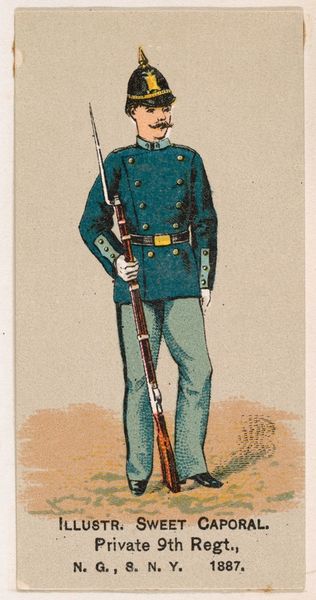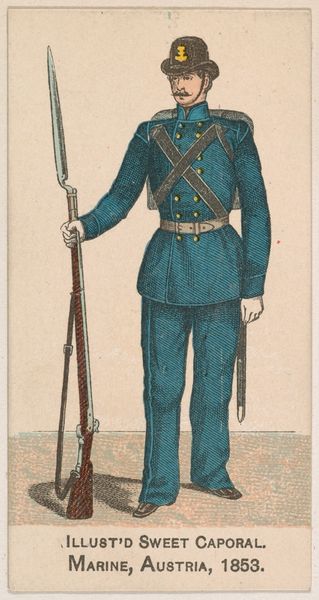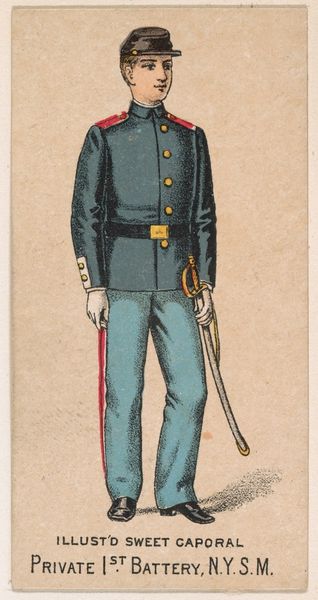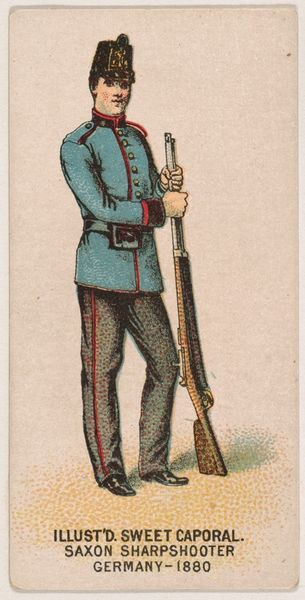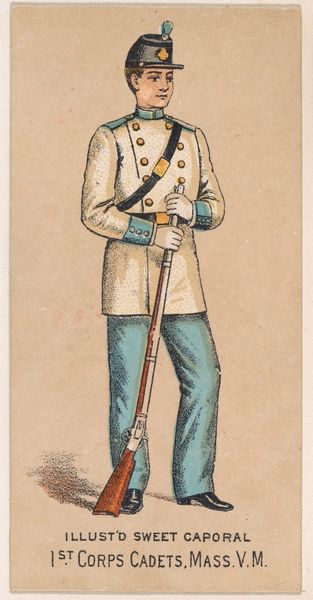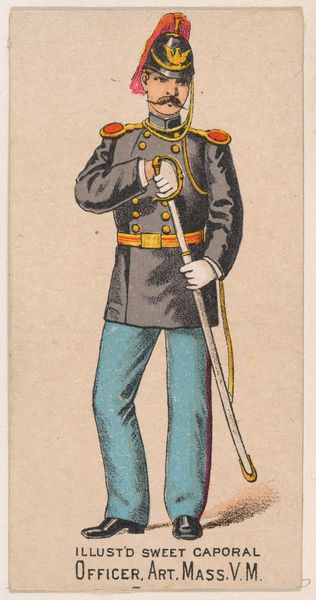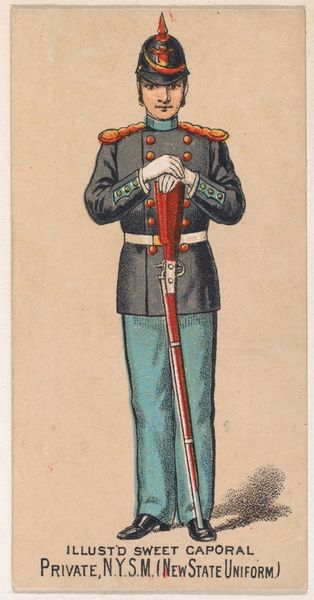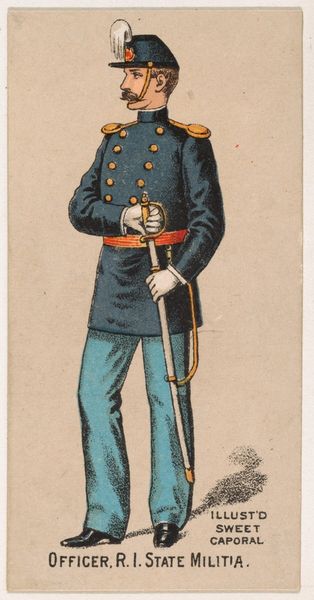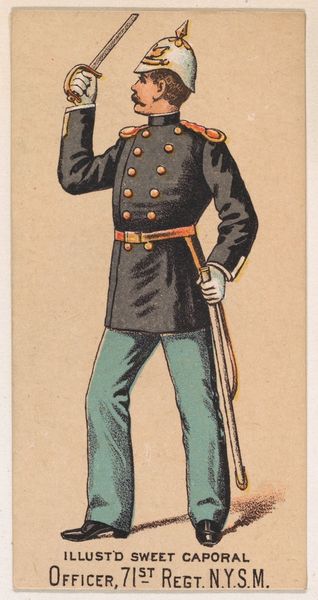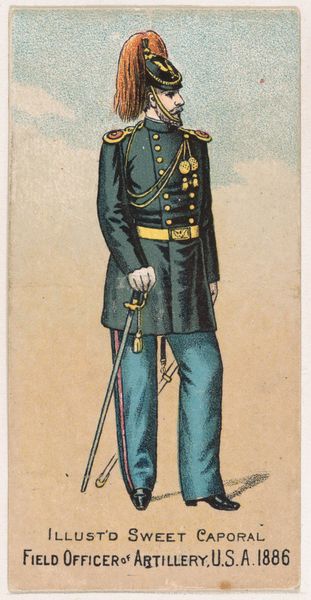
Private, 17th Separate Company, National Guard of the State of New York, from the Military Series (N224) issued by Kinney Tobacco Company to promote Sweet Caporal Cigarettes 1888
0:00
0:00
drawing, print
#
portrait
#
drawing
# print
#
men
#
genre-painting
#
realism
Dimensions: Sheet: 2 3/4 × 1 1/2 in. (7 × 3.8 cm)
Copyright: Public Domain
Editor: So, here we have "Private, 17th Separate Company, National Guard of the State of New York," a print from 1888 by the Kinney Brothers Tobacco Company, originally a promotional insert for Sweet Caporal cigarettes. It’s quite formal, almost rigid in its depiction. What jumps out at you when you see it? Curator: I immediately consider the function of this image within a larger social context. These tobacco cards were essentially advertisements, but they also played a role in shaping public perceptions of military service and, more broadly, nationalism. This private is presented as an idealized figure, contributing to a narrative about duty and honor. How does this idealization, which obscures lived experiences, speak to power structures in the late 19th century? Editor: That's an interesting point. It's easy to see this as just a historical curiosity, but it also served as propaganda. But to whom exactly? Curator: Think about the target audience: consumers of Sweet Caporal cigarettes. By associating their product with patriotic imagery, the tobacco company was tapping into, and reinforcing, notions of American masculinity and national pride. Furthermore, consider the era – the tail end of Reconstruction, when the narrative of a unified nation was actively being constructed, often at the expense of marginalized communities. What role did visual culture, like these cards, play in constructing and perpetuating these dominant narratives? Editor: So you are saying that this seemingly innocent image actually had real socio-political implications for the period. It’s almost a form of soft power. Curator: Precisely. It highlights how even seemingly benign objects are embedded within larger systems of power and influence. It also asks us to examine how notions of nation, duty, and honor intersect with race, class, and gender. It gives a new and nuanced meaning to this portrait. Editor: I’ll definitely look at images like this with fresh eyes from now on. It’s never just a picture, is it? Curator: Exactly, art never exists in a vacuum, it's an articulation within larger historical, political and cultural spheres.
Comments
No comments
Be the first to comment and join the conversation on the ultimate creative platform.
